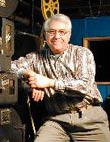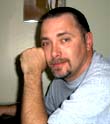|
|
 
|
|
Author
|
Topic: Using an oscilloscope to measure AC line noise?
|
|
|
|
|
Steve Guttag
We forgot the crackers Gromit!!!

Posts: 12814
From: Annapolis, MD
Registered: Dec 1999
|
 posted 04-07-2002 05:53 PM
posted 04-07-2002 05:53 PM




Steve is right...normally a line conditioner may be as simple as something that has capacitors arranged in a Pi configuration (one across the line and one on each leg to ground). Better ones also have MOVs to clamp any voltage exceeding the MOVs rating (surge supression). The best ones work by providing a high impedance to the spike yet don't affect normal operation. I suppose that if you had something like a UPS with pure sine-wave output (or a motor-generator set up) you could see an improvement if your normal input line is crap. We use Tripplite's IBAR-12 surge-suppressor on all of our racks (rack mount with 12 protected outlets, including two in front for test equipment). I don't think we have had ANY digital processors fail that have been plugged into them (card failure) that were not manufacturing defects (failed within the first 90 days of installation, ticking sounds in the Cat. 675A...etc). Now we have had a theatre with CP-500s reset 6 units out of 8 to factory defaults after the power in the the theatre repeatedly reset itself over a short period of time (seconds). Mark G will probably chime in here. This was not a power surge though. Steve ------------------
"Old projectionists never die, they just changeover!"
| IP: Logged
|
|
|
|
Josh Jones
Redhat
Posts: 1207
From: Plano, TX
Registered: Apr 2000
|
 posted 04-07-2002 08:36 PM
posted 04-07-2002 08:36 PM





I almost wonder if a spectrum analyzer would be a better choice, it would be easier to see the spikes, something used in RF service. I doubt that a RTA would do the job.just a thought Josh ------------------
"Film is made of silver, video is made of rust"
'nuf said
| IP: Logged
|
|
|
|
|
|
|
|
|
|
All times are Central (GMT -6:00)
|
|
Powered by Infopop Corporation
UBB.classicTM
6.3.1.2
The Film-Tech Forums are designed for various members related to the cinema industry to express their opinions, viewpoints and testimonials on various products, services and events based upon speculation, personal knowledge and factual information through use, therefore all views represented here allow no liability upon the publishers of this web site and the owners of said views assume no liability for any ill will resulting from these postings. The posts made here are for educational as well as entertainment purposes and as such anyone viewing this portion of the website must accept these views as statements of the author of that opinion
and agrees to release the authors from any and all liability.
|

 Home
Home
 Products
Products
 Store
Store
 Forum
Forum
 Warehouse
Warehouse
 Contact Us
Contact Us




 Printer-friendly view of this topic
Printer-friendly view of this topic













